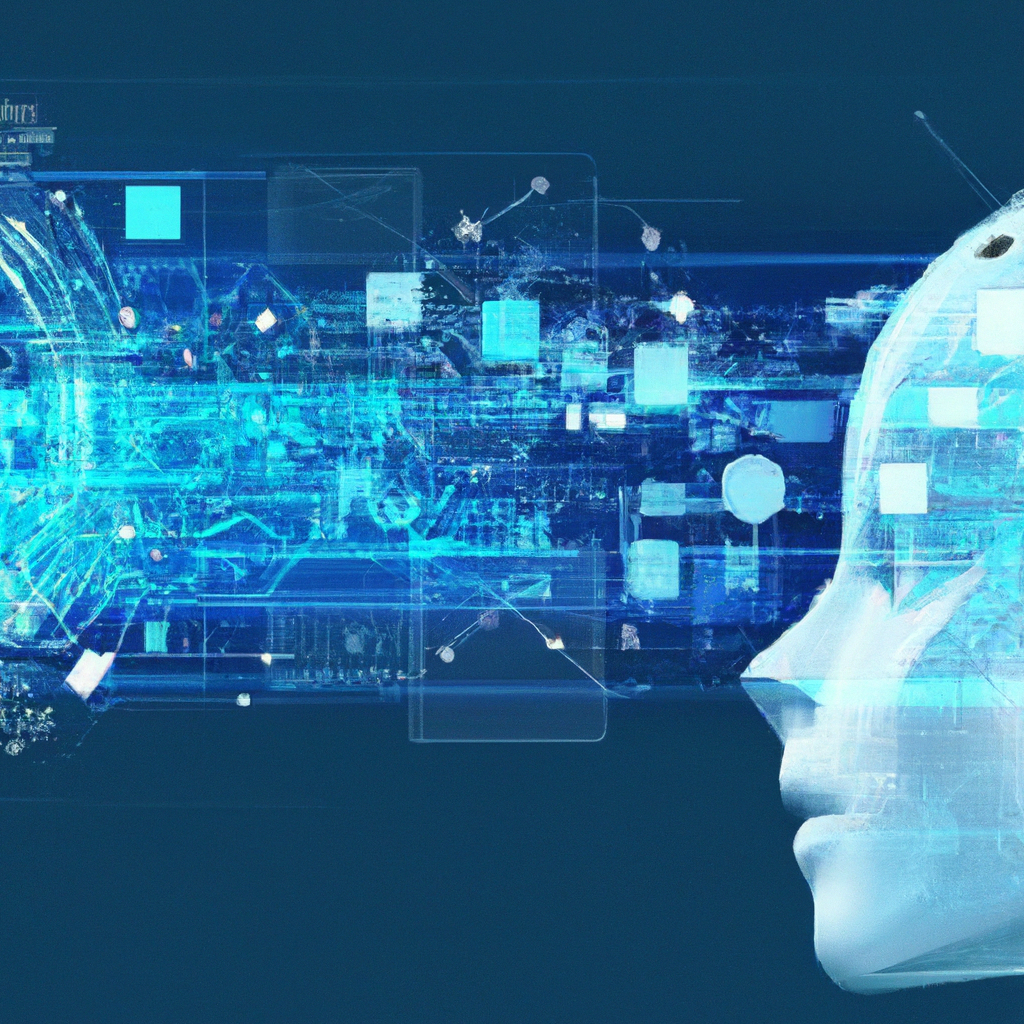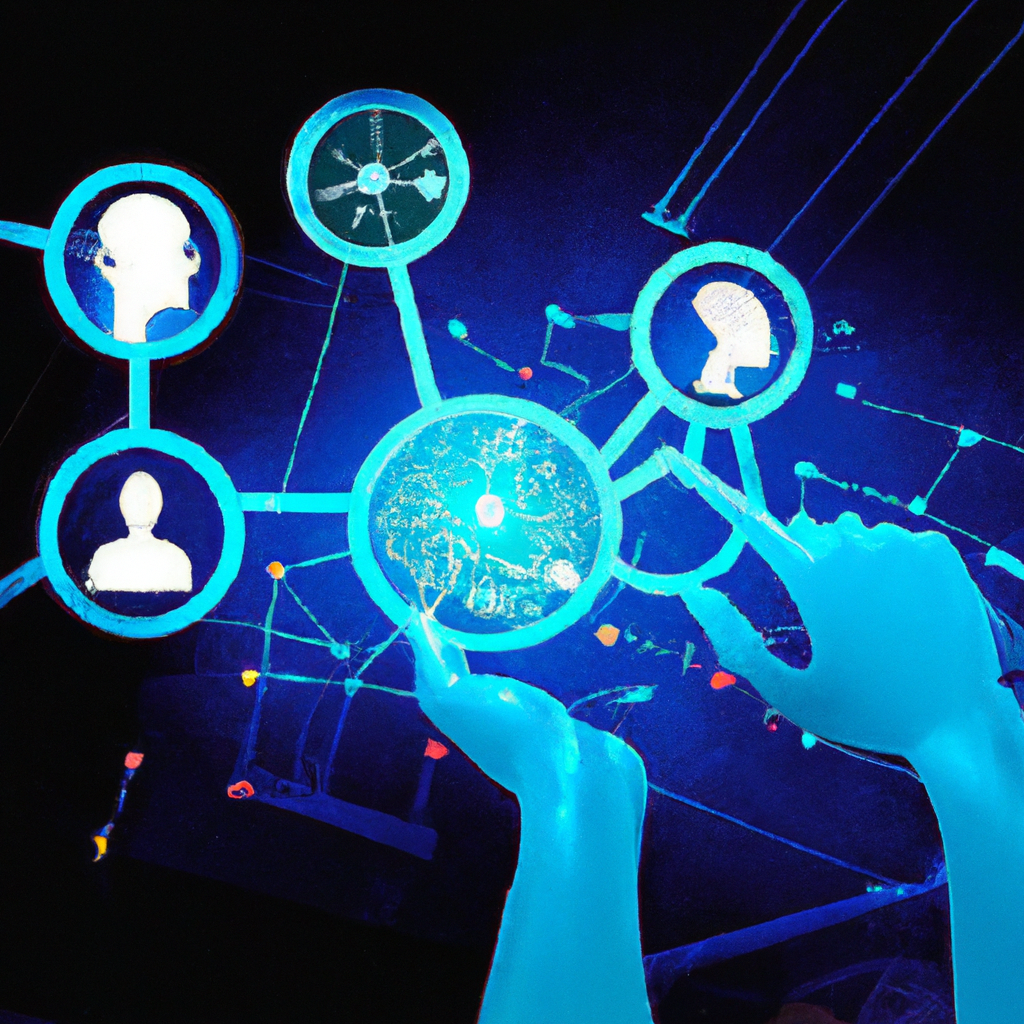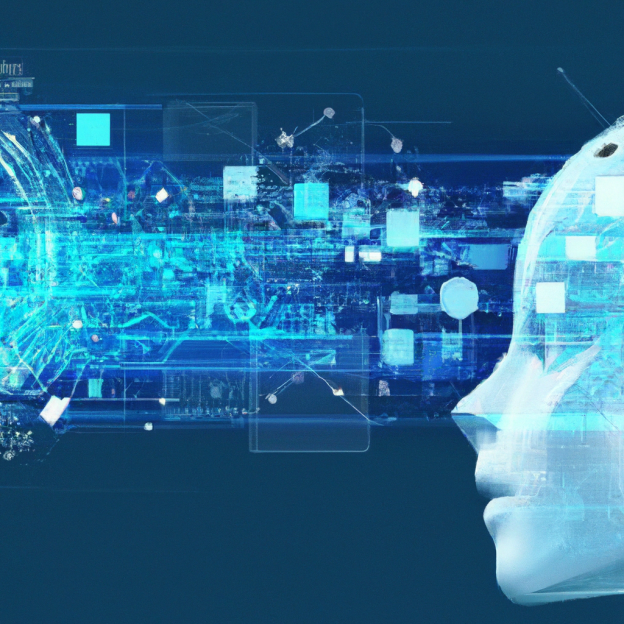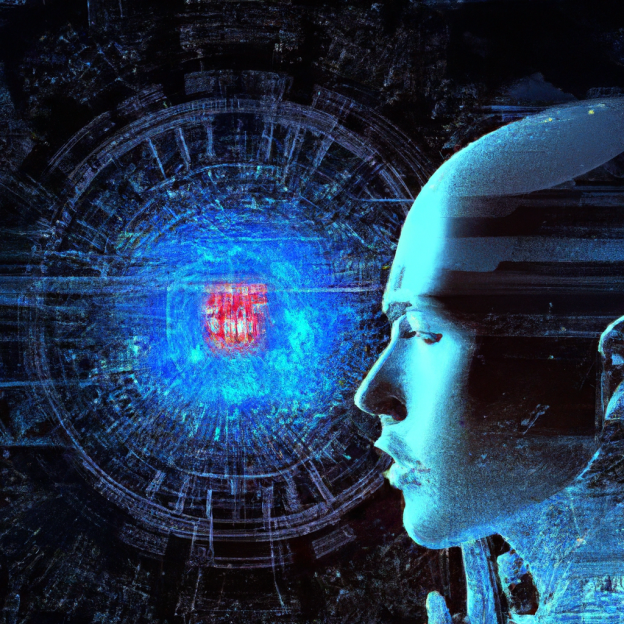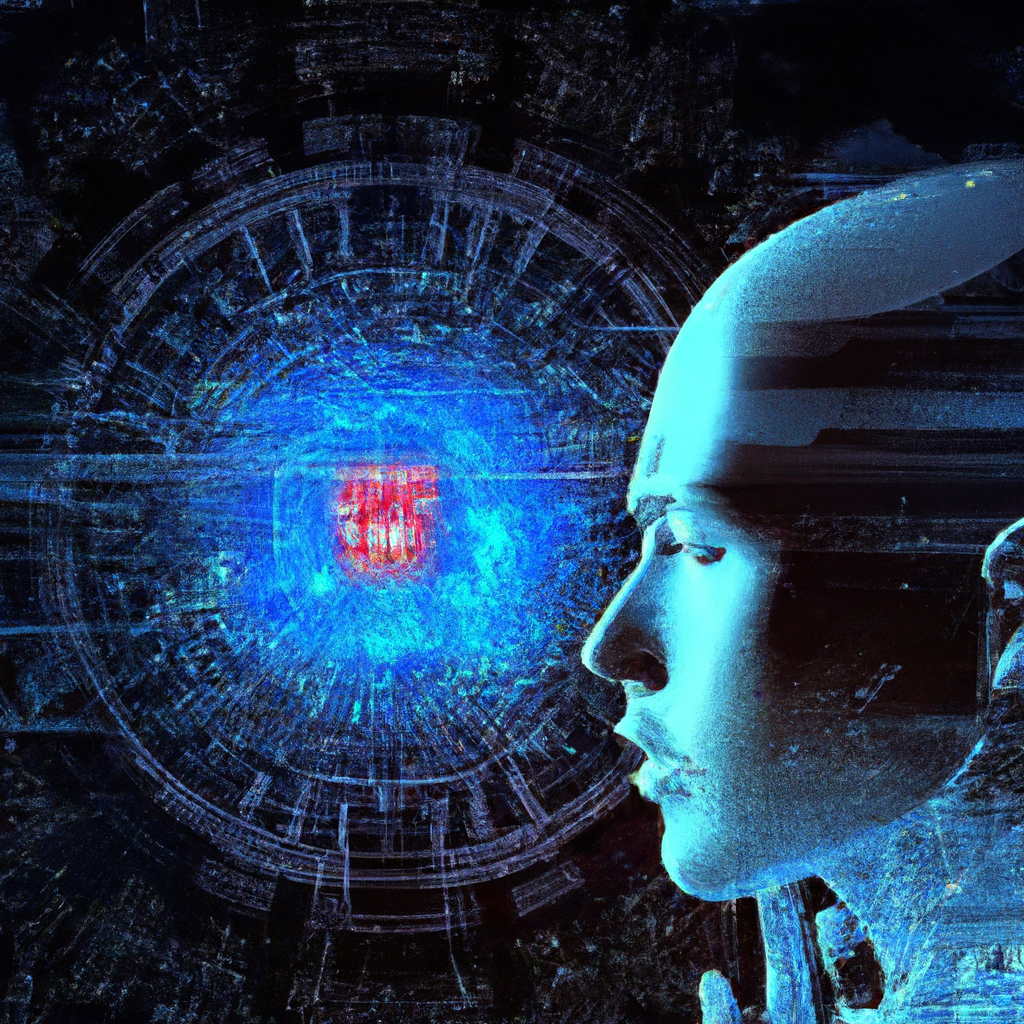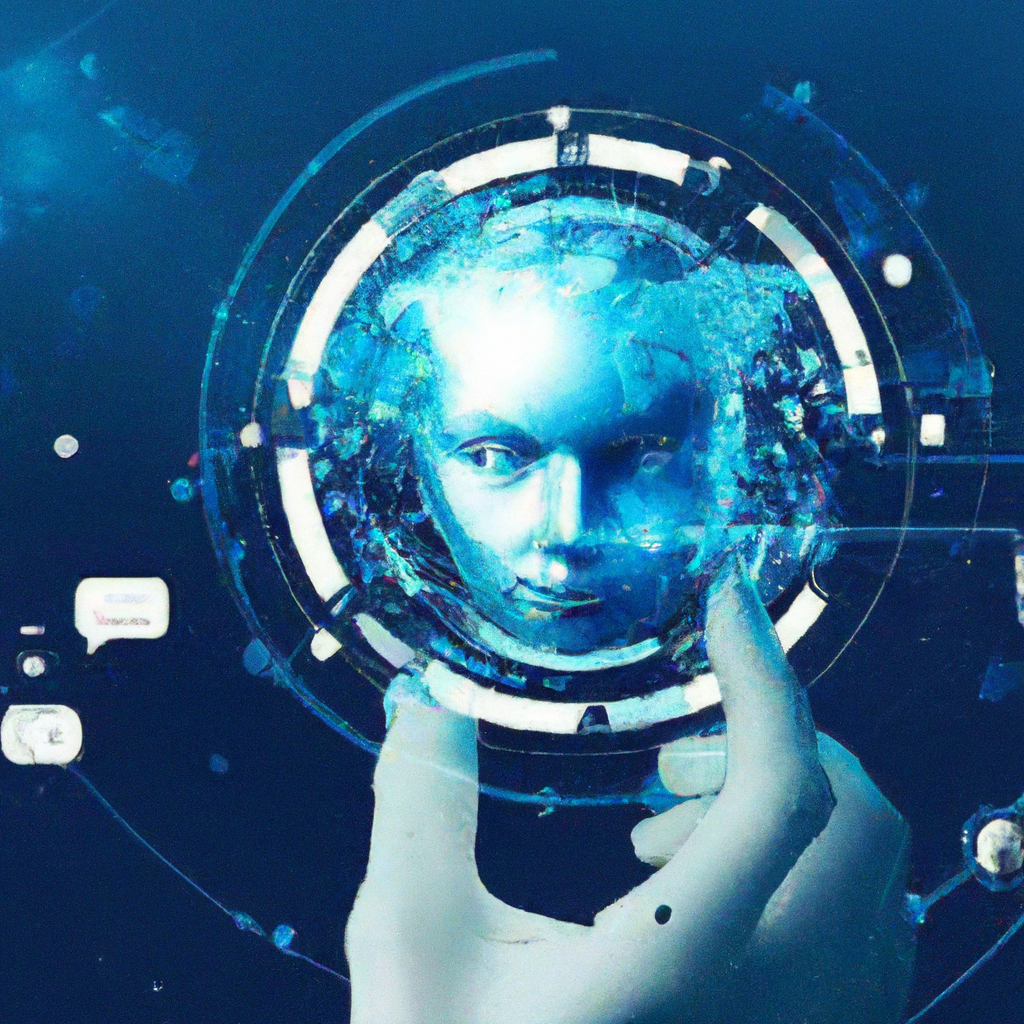Imagine a future where artificial intelligence (AI) surpasses human intelligence, revolutionizing the way we live, work, and interact. In this captivating journey into the not-so-distant future, we explore the immense potential of AI in 2050. From unprecedented advancements in healthcare and transportation to mind-boggling technological breakthroughs, the question persists: just how good will AI be in 2050? Buckle up and prepare to be amazed as we embark on a thrilling exploration of the possibilities that lie ahead.

Overview of AI
Artificial Intelligence, or AI, refers to the development of computer systems capable of performing tasks that typically require human intelligence. These systems can learn, reason, problem-solve, and even understand natural language. AI has the potential to revolutionize various aspects of our lives, from healthcare and transportation to education and entertainment. As technology continues to advance, AI is becoming increasingly sophisticated, enabling it to have a profound impact on society.
Definition of AI
AI is a broad term that encompasses a range of concepts and technologies. At its core, AI involves the development of intelligent systems that can perform tasks without explicit human programming. These systems use algorithms and models to process data, make decisions, and learn from experience. AI can be categorized into two main types: narrow AI and general AI. Narrow AI, also known as weak AI, is designed to perform specific tasks, while general AI, or strong AI, refers to AI systems that possess the ability to perform any intellectual task that a human can do.
Brief history of AI
The concept of AI has been around for decades, but significant progress has been made in recent years. The term “artificial intelligence” was coined in 1956 at the Dartmouth Conference, where researchers discussed the potential for machines to simulate human intelligence. In the following years, AI research made significant advancements, with researchers developing techniques such as rule-based systems, logical reasoning, and expert systems.
However, progress in AI faced setbacks and periods of limited funding, often referred to as “AI winters.” It wasn’t until the late 1990s and early 2000s that AI experienced a resurgence, largely due to the availability of large datasets and improvements in computing power. The emergence of machine learning, which allows AI systems to learn from data, has been a game-changer for the field. This led to breakthroughs in areas such as image and speech recognition, natural language processing, and recommendation systems.
Current state of AI
Today, AI is ingrained in our daily lives more than ever before. We interact with AI systems through virtual assistants like Siri and Alexa, and algorithms power personalized recommendations on streaming platforms and social media. AI is also playing a vital role in industries such as healthcare, finance, and manufacturing. The field of AI continues to advance rapidly, with ongoing research in areas like deep learning, reinforcement learning, and neural networks. As AI becomes more pervasive, it is essential to consider its societal impact and address challenges such as bias, ethics, and regulation.
Technological advancements
Moore’s Law and its impact on AI
Moore’s Law, which states that the number of transistors on a chip doubles approximately every two years, has had a profound impact on the advancement of AI. This exponential increase in computing power has enabled AI systems to process and analyze vast amounts of data quickly. As technology continues to advance, AI models can leverage the increased computational capabilities to train more complex and accurate models. However, the slowing down of Moore’s Law in recent years has necessitated exploring alternative solutions, such as specialized hardware and distributed computing.
Quantum computing
Quantum computing holds great promise for the field of AI. Unlike traditional computers that use bits to represent information, quantum computers use quantum bits (qubits). This enables quantum computers to perform calculations that are exponentially faster than classical computers. The potential of quantum computing to solve complex optimization problems and improve machine learning algorithms is being explored. While practical quantum computers are still in their early stages, many experts believe that they will play a significant role in accelerating advancements in AI in the coming years.
Neuromorphic computing
Neuromorphic computing is an emerging field of AI that aims to design computer systems inspired by the structure and function of the human brain. These systems replicate the neural networks present in the brain, enabling efficient and parallel processing. The advantage of neuromorphic computing lies in its ability to perform tasks with high energy efficiency and low latency, making it suitable for applications that require real-time processing, such as robotics and autonomous vehicles. As research in neuromorphic computing progresses, we can expect AI systems to become even more intelligent and adaptive.
Advances in machine learning algorithms
Machine learning algorithms form the foundation of AI systems. In recent years, there have been significant advancements in the field of machine learning. Deep learning, a subfield of machine learning, has revolutionized AI by enabling the training of artificial neural networks with multiple layers. This has led to breakthroughs in computer vision, natural language processing, and speech recognition. Additionally, advancements in reinforcement learning have allowed AI systems to learn through trial and error, leading to impressive results in game-playing and robotics. The continuous development and refinement of machine learning algorithms are critical for further advancements in AI.

Societal impact
Automation and job displacement
One of the most significant impacts of AI is automation and its potential to disrupt the job market. As AI systems become more capable, there is a concern that many jobs currently performed by humans could be replaced by machines. Industries such as manufacturing, customer service, and transportation are already experiencing automation-driven changes. While some jobs may be eliminated, new job opportunities are also emerging. It is important for society to anticipate these changes and develop strategies to reskill and upskill workers to adapt to the evolving job landscape.
Ethical considerations
The rapid development of AI raises important ethical considerations. As AI systems become more autonomous, questions arise about accountability, fairness, and privacy. For example, self-driving cars must make split-second decisions that can have life-or-death consequences. Additionally, AI algorithms can inadvertently perpetuate biases present in the data they are trained on, leading to unfair outcomes. Ensuring ethical AI requires transparent and accountable algorithms, diverse and inclusive datasets, and ongoing ethical evaluations to address potential biases and unintended consequences.
AI and healthcare
AI has the potential to transform healthcare in numerous ways. From improving diagnostic accuracy to speeding up drug discovery, AI applications are already making a significant impact. Machine learning algorithms can analyze medical images and identify patterns that may indicate diseases, assisting healthcare professionals in early detection and treatment. AI can also analyze vast amounts of patient data to identify trends or predict disease outbreaks. However, the implementation of AI in healthcare must be accompanied by careful considerations of privacy, data security, and patient consent.
AI and transportation
AI is playing a pivotal role in revolutionizing transportation. From self-driving cars to intelligent traffic management systems, AI has the potential to make transportation safer, more efficient, and environmentally friendly. Self-driving cars, enabled by AI-powered sensors and algorithms, can reduce accidents caused by human error and optimize traffic flow. AI-powered logistics systems can optimize delivery routes, reducing fuel consumption and emissions. However, the widespread adoption of AI in transportation raises concerns regarding safety, cybersecurity, and the impact on jobs in the transportation industry.
AI in education
The field of education can benefit greatly from AI applications. Personalized learning platforms powered by AI algorithms can adapt the curriculum and teaching methods to meet the unique needs of each student. AI-based tutoring systems can provide instant feedback and adaptively guide students through their learning journeys. Additionally, AI can assist in grading and assessment, reducing the burden on teachers and providing more timely feedback to students. However, the integration of AI in education needs to be accompanied by thoughtful considerations of privacy, data security, and the potential for AI to exacerbate educational inequalities.
Cognitive capabilities
Deep learning
Deep learning is a subset of machine learning that focuses on training artificial neural networks with multiple layers. By learning representations of data through these layers, deep learning models can extract complex patterns and features. This has led to breakthroughs in computer vision, natural language processing, and speech recognition. For example, deep learning models have achieved human-level performance in tasks such as image classification, object detection, and speech recognition. As deep learning continues to advance, AI systems will become increasingly proficient in perceiving and understanding the world around them.
Natural language processing
Natural language processing (NLP) is the branch of AI that focuses on enabling computers to understand, interpret, and generate human language. NLP powers applications such as virtual assistants, language translation, sentiment analysis, and chatbots. These systems analyze text and speech, extracting meaning and context. NLP techniques include tasks such as language modeling, named entity recognition, and sentiment analysis. As NLP algorithms become more sophisticated, AI systems will be able to communicate naturally with humans, improving interactions and opening up new possibilities for information retrieval and analysis.
Computer vision
Computer vision is a field of AI that enables machines to understand and interpret visual information from images or videos. AI systems powered by computer vision can analyze and recognize objects, faces, and gestures. Computer vision has numerous practical applications, ranging from autonomous vehicles and surveillance systems to medical imaging and augmented reality. Recent advancements in deep learning have significantly improved the accuracy and reliability of computer vision systems, allowing them to outperform humans in tasks such as object recognition and image classification.
AI and creativity
While traditionally associated with human intellect, creativity is an area where AI is beginning to make strides. AI systems can generate art, compose music, write stories, and even contribute to scientific research. By analyzing large datasets and learning patterns, AI models can produce novel and innovative outputs. For example, deep learning models can generate realistic images or compose music in specific styles. However, the question of whether AI can truly be considered creative remains a topic of debate. Some argue that AI simply replicates existing patterns, while others argue that AI has the potential to bring entirely new ideas and perspectives to the creative process.
Limitations and challenges
Data privacy and security
One of the most pressing concerns with the rise of AI is the need to safeguard data privacy and security. AI relies on vast amounts of data to train models and make predictions, often containing sensitive and personal information. Data breaches and the misuse of personal data pose significant risks. It is crucial to establish robust data protection policies, ensure anonymization and aggregation techniques, and implement secure storage and transmission protocols to safeguard user privacy. Additionally, AI systems must be designed to be resilient against cyberattacks and adversarial manipulation.
Bias in AI
AI systems, if not carefully designed and trained, can exhibit biases present in the data they are trained on. Biases can arise due to historical inequalities and societal prejudices reflected in the training data. For example, facial recognition systems have been shown to have higher error rates for women and people of color. It is essential to address bias in AI to ensure fairness and prevent discrimination. This involves using diverse and representative datasets, promoting diversity in AI teams, and implementing bias mitigation techniques during data collection, preprocessing, and model training.
AI decision-making
As AI systems become more autonomous and capable of making decisions, questions arise about the accountability and transparency of these decisions. AI algorithms can be complex and opaque, making it difficult to understand how certain decisions are reached. This lack of transparency can be problematic, especially in critical domains such as healthcare and criminal justice. Efforts are underway to develop explainable AI techniques that can provide insights into the decision-making process of AI systems. Ensuring the ethical and responsible use of AI requires transparency, accountability, and the involvement of domain experts in AI development.
Lack of transparency and interpretability
Related to AI decision-making, the lack of transparency and interpretability in AI algorithms has been a significant concern. Machine learning models can be highly complex, and it can be challenging to understand how they arrive at specific predictions or decisions. This lack of interpretability raises questions about trust, accountability, and potential biases in AI systems. Researchers are actively working on developing explainable AI methods that provide insights into the inner workings of AI models. By improving transparency and interpretability, AI can become more trustworthy and gain wider adoption across various domains.
AI in various industries
Healthcare
AI has tremendous potential to revolutionize healthcare. The ability to analyze large volumes of patient data can assist medical professionals in diagnosing diseases, identifying treatment options, and predicting outcomes. AI-powered imaging systems can analyze medical images, aiding in early detection of diseases like cancer and improving accuracy. Additionally, AI can help optimize hospital operations, such as resource allocation and patient scheduling. However, integrating AI into healthcare requires addressing privacy and security concerns, ensuring the accuracy and reliability of AI algorithms, and maintaining the human touch in patient care.
Manufacturing
AI is transforming the manufacturing industry by enabling automation, optimization, and predictive maintenance. AI-powered robots and autonomous systems can perform repetitive tasks and streamline production processes, improving efficiency and reducing costs. Machine learning algorithms can analyze sensor data and identify patterns that indicate equipment failures, preventing costly breakdowns and optimizing maintenance schedules. Additionally, AI can enhance supply chain management, forecasting demand and optimizing inventory levels. The integration of AI in manufacturing holds the promise of increased productivity, reduced waste, and improved quality control.
Finance
AI is reshaping the finance industry by automating manual processes, improving risk assessment, and enhancing customer experience. Machine learning algorithms can analyze vast amounts of financial data, identify patterns, and make predictions about market trends. This can assist financial institutions in making informed investment decisions, managing risks, and detecting fraudulent activities. AI-powered chatbots and virtual assistants can provide personalized financial advice and support, enhancing customer engagement. However, the integration of AI in finance must address concerns related to data privacy, security, and the need for regulatory frameworks that keep pace with technological advancements.
Transportation
The transportation industry stands to benefit greatly from AI applications. Self-driving cars, enabled by AI-powered sensors and algorithms, have the potential to reduce accidents caused by human error and improve traffic flow. AI can optimize logistics and supply chain management, reducing costs and improving delivery efficiency. Additionally, AI can enhance public transportation systems, predicting demand and optimizing routes and schedules. However, the widespread adoption of AI in transportation must address concerns regarding safety, cybersecurity, liability, and the impact on employment in the transportation sector.
Education
AI can transform education by enabling personalized learning, automating administrative tasks, and improving assessment methods. AI-powered learning platforms can adapt the curriculum and teaching materials to the unique needs of each student, enhancing engagement and learning outcomes. Machine learning algorithms can assess students’ performance and provide personalized feedback, reducing the burden on teachers and enabling timely interventions. Additionally, AI can assist in grading and assessment, offering automated scoring and analysis of assignments. However, the integration of AI in education must be accompanied by thoughtful considerations of data privacy, security, and the potential for AI to exacerbate educational inequalities.
AI and Robotics
Collaboration between AI and robots
The collaboration between AI and robotics has the potential to revolutionize various industries. AI-powered robots can leverage their perception, learning, and decision-making capabilities to perform tasks that were previously reserved for humans. Whether it’s in manufacturing, healthcare, or exploration, robots equipped with AI algorithms can enhance efficiency, accuracy, and safety. For example, in healthcare, robots can assist in surgeries or provide care to elderly patients. However, ensuring effective collaboration between AI and robots requires addressing challenges such as human-robot interaction, safety considerations, and the ethical implications of replacing human workers with autonomous machines.
Advancements in robotics
Advancements in robotics have driven the integration of AI into physical systems. Robots are becoming more versatile, adaptive, and capable of interacting with their environment. This is fueled by advancements in sensors, actuators, and AI algorithms. Today’s robots can navigate complex environments, manipulate objects, and even learn from experience. Humanoid robots can mimic human movements and expressions, making them suitable for tasks that require human-like interactions. The development of advanced robotic systems holds promise in areas such as healthcare, manufacturing, and exploration, but challenges remain in ensuring reliable and safe operation in various real-world scenarios.
Impact on the workforce
The rise of AI and robotics has raised concerns about the impact on the workforce. As automation becomes more prevalent, routine tasks that were previously performed by humans may be replaced by machines. This could lead to job displacement and inequality if not adequately managed. However, it is important to note that AI and robotics can also create new job opportunities and improve working conditions. Human skills such as creativity, problem-solving, and emotional intelligence will continue to be in demand. To mitigate the potential negative impact on the workforce, governments, organizations, and individuals need to focus on reskilling and upskilling programs, fostering innovation, and promoting inclusive economic policies.
AI governance and regulation
Ethical guidelines
As AI continues to advance, ethical considerations are becoming increasingly important. Many organizations and researchers have developed ethical guidelines to ensure responsible AI development and deployment. These guidelines emphasize transparency, fairness, accountability, and the avoidance of biases. Ethical guidelines also address issues such as privacy, security, and the potential societal impact of AI. While ethical guidelines provide a framework, their implementation requires collaboration between policymakers, researchers, and industry stakeholders to ensure that AI is aligned with societal values and benefits all individuals.
Legal frameworks
Governments around the world are working on developing legal frameworks to govern AI technologies. These frameworks aim to address concerns related to privacy, data protection, liability, and accountability. For example, the European Union’s General Data Protection Regulation (GDPR) sets guidelines for the collection, processing, and storage of personal data, including data used by AI systems. Additionally, various jurisdictions are exploring regulations specific to autonomous vehicles, data usage, and algorithmic transparency. Crafting effective legal frameworks requires a deep understanding of AI technologies and their potential impact, requiring collaboration between policymakers, legal experts, and AI researchers.
International cooperation
The global nature of AI development necessitates international cooperation and collaboration. Addressing the challenges and potential risks associated with AI requires a collective effort from countries, organizations, and researchers. Cooperation can take the form of sharing best practices, exchanging research findings, and developing common standards and guidelines. International cooperation can also help in addressing ethical concerns, ensuring the responsible development and deployment of AI technologies worldwide. By fostering collaboration, the global community can navigate the complexities of AI governance and regulation more effectively.
Predictions and speculations
Experts’ opinions on AI in 2050
Predicting the future of AI is challenging, but experts have put forward various opinions on its potential in 2050. Some envision AI systems that are much more intelligent and capable than humans, often referred to as artificial general intelligence (AGI). These systems could outperform humans across a wide range of intellectual tasks and contribute to scientific breakthroughs, advanced healthcare, and space exploration. However, there are also concerns about the potential risks associated with AGI and the need for robust safety mechanisms. Other experts take a more cautious approach, anticipating further advancements in AI but not necessarily achieving AGI in the next few decades.
The possibility of artificial general intelligence (AGI)
Artificial general intelligence, or AGI, refers to AI systems that possess the ability to perform any intellectual task that a human can do. While achieving AGI remains an active area of research, experts hold varying opinions on its feasibility and timeline. Some believe that AGI could be achieved within the next few decades, driven by advancements in machine learning, computing power, and algorithms. Others argue that achieving AGI is still a distant goal, as it requires a deep understanding of human cognition and consciousness. Regardless of the timeline, the development of AGI raises important considerations around its impact on society, ethics, and governance.
AI’s impact on daily life
AI is already deeply embedded in our daily lives, and its impact will continue to grow in the coming years. From virtual assistants and personalized recommendations to autonomous vehicles and smart home systems, AI is enhancing our productivity, convenience, and entertainment. As AI systems become more advanced, we can expect them to play an even more significant role in healthcare, education, transportation, and other domains. However, ensuring the responsible and ethical development and deployment of AI is critical to minimizing potential risks and maximizing the benefits for individuals and society as a whole.
Conclusion
AI has come a long way since its inception, and its impact on society is becoming increasingly profound. From the advancements in machine learning algorithms and computing power to the integration of AI in various industries, AI is transforming the way we live, work, and interact. However, AI also presents challenges and concerns that need to be addressed, such as job displacement, bias, privacy, and ethics. Looking ahead to the future, the responsible development and deployment of AI, guided by ethical frameworks and collaborative governance, will be key to harnessing the full potential of AI while ensuring its benefits are shared by all.
